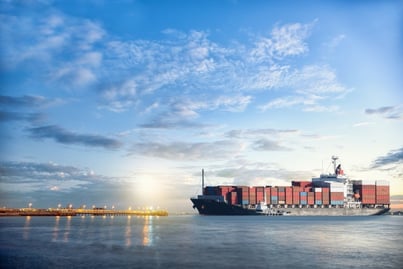The world, and your supply chain, is in a precarious position. The climate emergency, the public health crisis of the COVID-19 pandemic, and socio-political upheaval are threatening the security of procurement across the Original Equipment Manufacturer (OEM) and EMS industry. Many OEMs are considering “relocating” their manufacturing and bringing production closer to their end-markets.
Key risks of OEM Procurement
Any project carries risks, but some are more critical — or easier to mitigate — than others. Knowing when, and how, to balance the risks with expected gains will ensure your procurement process remains streamlined and secure. Four major risks affect your supply chain:
Geopolitical risks
For the last 20 years, the industrial strategy has been to manufacture products in the so-called “Low-cost Countries”. In terms of Supply Chain, these regions have been stable and some became leaders in those industries — including electronic manufacturing in terms of technological expertise, price, and more. But as soon as you manufacture your product outside your country and region, geopolitical risks are out of your hands.
One of the most glaring examples of this year is how the US–China trade war has been directly impacting the final consumer product price and threatens the reliability of procurement. Many companies have had to find new manufacturing solutions, sometimes even new EMS partners — and we’ve seen a huge number of companies trying to exit China for that reason.
Changing suppliers, auditing, assessing new EMS providers, and ramping-up all come at a huge cost and, therefore, a risk; especially when it hasn’t been thoroughly planned. This sudden need to find secure suppliers has left some countries scrambling to meet new manufacturing demands for technologically advanced products. This can easily affect OEM deadlines, as increasing capacity and expertise takes time.
Geopolitical risks threaten both the stability of your prices, but may also leave you needing to find reliable suppliers at short notice. Double-sourcing and producing locally will safeguard against these, ahead of time.
The risk and consequences of delay
 Geopolitical risks often translate into unavoidable delays in delivery and some are easier to plan for and manage than others. For example, the increase in airline prices due to the COVID-19 pandemic has impacted costs tremendously, while delays in shipping threatened production deadlines. Ocean shipping remains an option but takes 30–60 days (depending on the destination), which will create delays if not managed properly. This still creates high risks and can jeopardize your whole supply chain if you don’t work with the right partners.
Geopolitical risks often translate into unavoidable delays in delivery and some are easier to plan for and manage than others. For example, the increase in airline prices due to the COVID-19 pandemic has impacted costs tremendously, while delays in shipping threatened production deadlines. Ocean shipping remains an option but takes 30–60 days (depending on the destination), which will create delays if not managed properly. This still creates high risks and can jeopardize your whole supply chain if you don’t work with the right partners.
Related: Asteelflash has a dedicated team that monitor the Freight situation daily. Read our latest insights on our Supply Chain Updates page.
Financial risks
Without financial resilience, many companies can’t survive the COVID-19 crisis. This makes markets even more unstable and affects procurement for many. When many countries locked down, EMS companies had to find solutions to mitigate disruptions on their procurement. When combined with the closure of their factories, those without cash in hand will be unable to recover.
Partnering with a larger, financially stable EMS company that can absorb these financial shocks will secure your supply chain. The COVID-19 pandemic has highlighted that, from now on, your suppliers must be financially stable.
What you can do to minimize risks ?
Two ways to mitigate the risks are:
- Double-sourcing
- Manufacturing closer to your end-market
1. Double-sourcing limits risks
For example, if one of your suppliers closes its factories for any reason (natural disaster, bankruptcy, etc.), your second supplier can ensure continuity of your production and even absorb the need to increase production in case of emergency. However, it increases the amount of engineering work, as you're sourcing from multiple suppliers or locations and will require more qualifications, audits, certifications, and so on.
2. Manufacturing closer to your end-market
The COVID-19 pandemic has stimulated many local supply chains and made bringing production closer to the end market a feasible way to secure procurement — with far-reaching benefits. For example, small companies that need high value, complex circuit boards manufactured in small quantities will benefit from increased local support.
Companies relocating their manufacturing can secure faster lead times, better communication, the least procurement risks, and the quickest responses.
An EMS company with a global footprint makes for a resilient partner in international markets. With 17 fully fitted plants around the world, Asteelflash can help bring manufacturing closer to your end-markets, no matter where they are. With manufacturing capabilities available in America, Europe, North Africa, and Asia, Asteelflash is a real asset to customers with an international growth strategy. Contact the team to discuss your needs or click the button below to start a quotation process.




